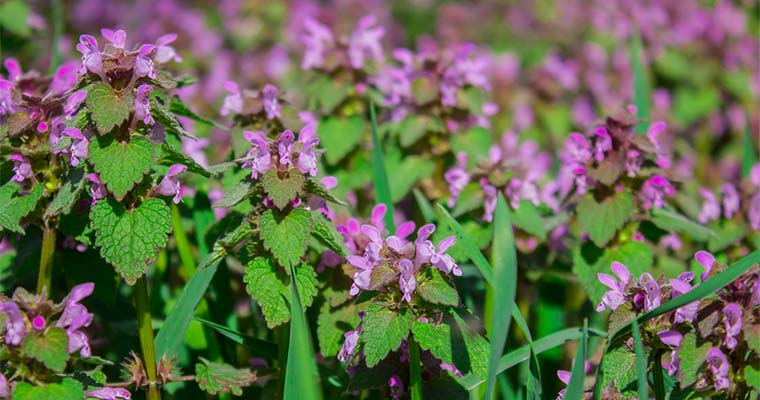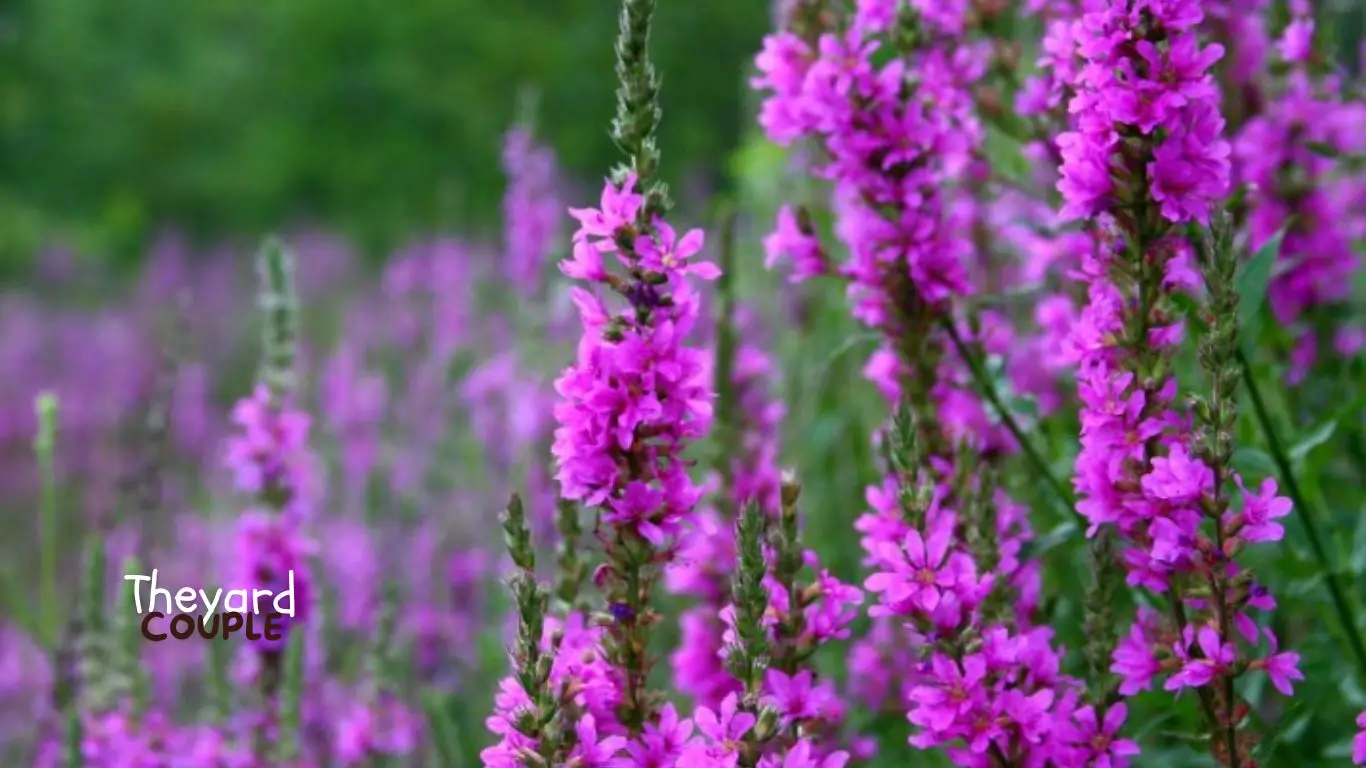Purple flowers can add a burst of vibrant color to any yard, whether in your front yard, backyard, or along the side of the house. These stunning blossoms can make your outdoor spaces look more inviting and charming. However, when these purple flowers are actually weeds with purple flowers, they can become a nuisance that if you are not circumspect enough, can detract the yard’s overall beauty.
On my site, you’ll find plenty of tips on managing and maintaining the perfect yard, including the most recent tip on how to remove standing water in yard.
Understanding and managing these lawn weeds with purple flowers is crucial to keeping your garden looking pristine. Let’s dive into the details of these vibrant yet troublesome plants and learn how to deal with them effectively.
Compare:
- 25 Beautiful Bushes for Front of House
- 25 Pink Flowering Shrubs for a Dazzling Curb Appeal
- 25 Plants for Around the Pool Landscaping
- 35 Impeccable Walkway Ideas for Front and Backyards
The 15 Weeds with Purple Flowers You Need to Know

Purple-flowered weeds can be quite deceptive; their beauty often masks their invasive nature. Here are 15 common weeds with purple flowers that you may encounter and tips on how to manage them effectively.
1. Henbit (Lamium amplexicaule)

Henbit is a winter annual weed with purple flowers that features small, tubular purple flowers and a distinctive, creeping growth habit.
Its rounded, heart-shaped leaves are often marked with pale green veins, and the plant typically forms dense mats that can crowd out other vegetation.
Henbit thrives in cool weather, making it particularly problematic in early spring and late fall.
Where It’s Found: Henbit is widespread throughout the United States, with a higher prevalence in the southeastern and midwestern regions. It commonly appears in lawns, gardens, and disturbed areas.
How to Control It: To control Henbit, focus on maintaining a healthy lawn with proper mowing and fertilization practices. Applying a pre-emergent herbicide in late summer or early fall can prevent Henbit seeds from germinating.
For existing infestations, spot-treating with a broadleaf herbicide can be effective. For more tips, visit our guide on preventing weeds on Florida lawns.
2. Purple Deadnettle (Lamium purpureum)

Purple Deadnettle is a winter annual that produces clusters of small, tubular purple flowers on spikes. It has distinctive, jagged leaves with a reddish tint and grows low to the ground, forming dense, mat-like patches.
The plant is known for its ability to rapidly spread through both seed and vegetative means.
Where It’s Found: Purple Deadnettle is found across the United States, particularly in areas with disturbed soils, such as garden beds, lawns, and agricultural fields.
How to Control It: Hand-pulling is effective if done before the plant goes to seed. For larger infestations, apply a broadleaf herbicide designed to target purple flowers weeds, such as Surge Broadleaf Herbicide (pictured above).
Ensuring that garden beds are well-maintained and properly mulched can also help reduce its spread.
Related: 45 Eye-Catching Black Mulch Landscaping Ideas
3. Common Bluebell (Hyacinthoides non-scripta)

Common Bluebell features bell-shaped purple flowers that are highly attractive but can quickly become invasive.
The plant forms dense clusters of slender, arching leaves and can spread rapidly through bulb offsets. It often creates large patches that outcompete other garden plants and native species.
Where It’s Found: This weed with purple flowers is primarily found in the northern parts of the United States and is common in moist, well-drained soils, particularly in garden beds and shaded areas.
How to Control It: Manual removal of the bulbs, along with regular monitoring and vigilance, can help control Common Bluebell. For larger infestations, use a systemic herbicide that targets perennial weeds and their root systems.
4. Speedwell (Veronica spp.)

Speedwell, which includes several species like the Common Speedwell (Veronica chamaedrys), features clusters of small purple to blue flowers and has a low-growing, spreading habit.
The plant’s leaves are usually oval and serrated, and it can quickly cover large areas, competing with other plants for resources.
Where It’s Found: Speedwell is widespread across the U.S., thriving in cool, shaded areas such as lawns, garden beds, and along the edges.
How to Control It: Improving lawn health through proper watering, fertilization, and drainage can help manage Speedwell. For more severe cases, a selective broadleaf herbicide can effectively target and control this weed.
Other blogs you might find interesting:
5. Ground Ivy (Glechoma hederacea)

Ground Ivy, also known as Creeping Charlie, is a perennial weed with purple flowers and a creeping growth habit. Its round, scalloped leaves have a distinctive minty fragrance.
Ground Ivy spreads through stolons (horizontal stems) that root at nodes, creating a dense ground cover that can smother other plants.
Where It’s Found: This weed is prevalent in the eastern United States and is often found in shady, moist areas such as under trees and along fences.
How to Control It: Regular mowing and hand-pulling can manage small infestations of Ground Ivy. For larger areas, a broad-spectrum herbicide that targets creeping plants can be effective.
Maintaining proper lawn care practices, such as improving sunlight exposure and soil health, can also help suppress its growth.
6. Purple Loosestrife (Lythrum salicaria)

Purple Loosestrife is a tall, perennial weed with purple flowers known for its striking purple flower spikes that can reach several feet in height.
It forms dense stands that can outcompete native wetland plants, reducing biodiversity and altering habitat conditions.
Where It’s Found: Common in wetland areas, riverbanks, and lake shores in the northern United States.
How to Control It: Manual removal, including digging out the root system, is effective. For larger infestations, biological control methods or herbicides may be necessary.
7. Violet (Viola spp.)

Violets are often admired for their delicate purple flowers but can become invasive in lawns and garden beds. They spread through both seeds and underground rhizomes, forming dense patches that can outcompete desirable plants.
Where It’s Found: Violets are widespread across the U.S., especially in shaded and damp areas.
How to Control It: Regular mowing and hand-pulling can keep violet populations in check. A selective herbicide can also help manage persistent infestations. For more tips, check our guide on how to get rid of dandelions in lawn.
8. Spotted Deadnettle (Lamium maculatum)

Spotted Deadnettle has purple flowers with distinctive spotted leaves. It forms dense clumps and can crowd out other plants in garden beds. This perennial weed can spread aggressively, making it challenging to control once established.
Where It’s Found: This weed with purple flowers is found in garden beds and shaded areas throughout the U.S.
How to Control It: Hand-pulling and regular garden maintenance can help manage Spotted Deadnettle. In cases of severe infestation, a targeted herbicide may be necessary.
9. Creeping Jenny (Lysimachia nummularia)

Creeping Jenny features purple flowers and a creeping growth habit. It’s popular in landscaping as a ground cover but can quickly spread across garden beds, suppressing other plants. The plant forms a dense mat of foliage that can be difficult to control.
Where It’s Found: Common in various garden environments across the U.S.
How to Control It: Regular trimming and manual removal of runners can help control its spread. For extensive coverage, consider using a non-selective herbicide.
10. Lamb’s Ear (Stachys byzantina)

Lamb’s Ear has soft, grayish leaves and produces purple flower spikes. Although it’s more commonly used as an ornamental plant, it can spread beyond its intended space.
The weed’s soft texture and tall flowers make it an attractive but potentially invasive addition to garden beds.
Where It’s Found: Found in garden beds throughout the U.S., especially in dry, sunny locations.
How to Control It: Regular pruning and dividing of the plant can help control its spread. For larger infestations, use a targeted herbicide.
11. Sweet William (Dianthus barbatus)

Sweet William features clusters of purple flowers and is often used in flower beds. It can self-seed and spread into surrounding areas if not managed properly. Its vibrant blooms make it a popular choice, but it can become invasive.
Where It’s Found: Common in garden beds and landscapes across the U.S.
How to Control It: Regular deadheading and removal of spent flowers can prevent self-seeding. Invasive populations may require herbicidal control.
12. Periwinkle (Vinca minor)

Periwinkle, or Myrtle, is a groundcover with purple flowers and a spreading growth habit. It’s popular in landscaping but can become invasive, spreading aggressively through its trailing stems and rooting nodes.
Where It’s Found: Found in garden beds and shaded areas throughout the U.S.
How to Control It: Regular trimming and manual removal of runners can help manage its spread. For extensive infestations, use a targeted herbicide.
13. Pennycress (Thlaspi arvense)

Pennycress has small purple flowers and can become a problematic weed in crops and garden beds. It produces a lot of seeds and spreads rapidly, often becoming a nuisance in agricultural settings.
Where It’s Found: Common in agricultural areas and garden beds throughout the U.S.
How to Control It: Regular weeding and crop rotation can help manage Pennycress. Herbicides may be necessary for large infestations.
14. Hedge Bindweed (Calystegia sepium)

Hedge Bindweed features trumpet-shaped purple flowers and is known for its vigorous growth. It can climb and smother other plants, making it a challenging weed to control in garden beds and along fence lines.
Where It’s Found: Found in gardens and along fence lines throughout the U.S.
How to Control It: Regular removal of the vines and the use of a systemic herbicide can help control Hedge Bindweed. Persistent management is necessary to prevent reoccurrence.
15. Common Bluebell (Hyacinthoides non-scripta)

Common Bluebell displays bell-shaped purple flowers and can form dense colonies. Although its vibrant color is appealing, it can spread aggressively, competing with other plants. It is often found in garden beds and other moist, well-drained soils.
Where It’s Found: This weed with purple flowers is primarily found in the northern parts of the U.S. and in areas with moist, well-drained soil.
How to Control It: Manual removal of the bulbs and regular monitoring can help control Common Bluebell. For larger infestations, use a systemic herbicide that targets perennials.
What Other Readers Ask About Weeds with Purple Flowers
Q: What are the purple flowers in my yard?
A: The purple flowers in your yard could be any of the weeds with purple flowers listed above. Identifying the specific plant can help in choosing the right control methods. Check for leaf shape, growth habit, and flower structure to determine the exact type.
Q: How can I prevent purple-flowered weeds from taking over my lawn?
A: Maintaining a healthy lawn through proper mowing, watering, and fertilization can help prevent many weeds. Additionally, using pre-emergent herbicides and regular monitoring can keep purple flowers weeds at bay. Learn more about preventive measures in our weeds and pests category.
Q: Are there any natural ways to control purple-flowered weeds?
A: Yes, natural methods include hand-pulling, mulching, and using organic herbicides. Regular garden maintenance and promoting healthy plant growth can also help control these purple flowers weeds.
Q: Can I use herbicides to control these weeds?
A: Yes, selective herbicides targeted at broadleaf weeds can be effective. Ensure you choose a product suitable for your specific type of weed with purple flowers and follow the application instructions carefully.
Final Thoughts
Dealing with weeds with purple flowers requires a blend of proper identification, effective control measures, and ongoing maintenance.
By staying vigilant and employing the right strategies, you can keep these vibrant but troublesome plants in check and maintain the beauty of your yard.




